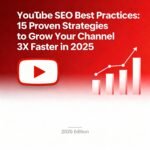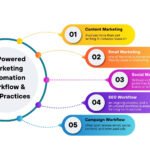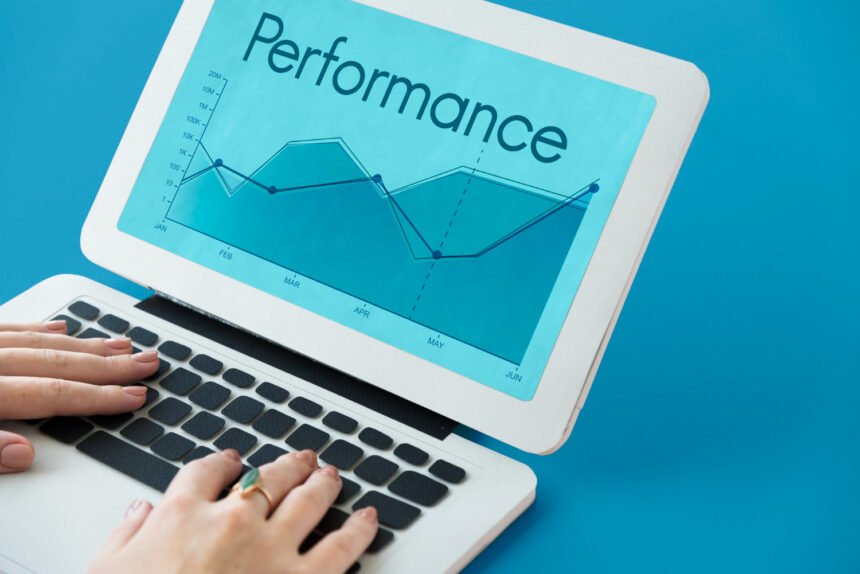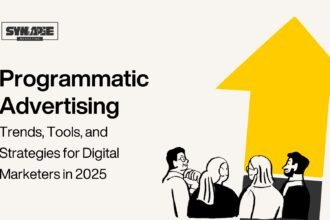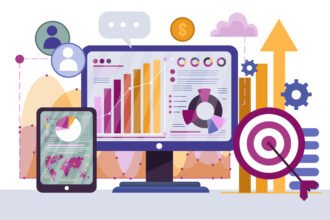In today’s performance-driven digital landscape, knowing what is the difference between paid ads and performance marketing isn’t optional—it’s essential.
Every day, businesses pour thousands into campaigns hoping for results—but too often, they’re flying blind. The result? Bloated ad spend, minimal returns, and marketing teams scratching their heads, wondering where the clicks went wrong.
Here’s the truth: paid advertising and performance marketing are not the same thing. They might share platforms and ad formats, but their goals, structures, and success metrics are fundamentally different. And if you don’t understand that difference, you’re likely wasting precious budget.
This publication will unpack what is the difference between paid ads and performance marketing—and why it should matter to your bottom line. Whether you’re a startup founder bootstrapping your way to visibility or a CMO navigating seven-figure ad budgets, this breakdown will help you spend smarter, track better, and convert more effectively.
So, let’s demystify the jargon, cut through the fluff, and get straight to the ROI.
What is Paid Advertising?
Before we can fully understand what is the difference between paid ads and performance marketing, we need to start with the basics. Let’s break down paid advertising—the digital marketing workhorse that’s often misunderstood.
What is Paid Advertising?
Paid advertising refers to any digital marketing strategy where a brand pays to place promotional content in front of a target audience. Whether it’s a banner on a news site, a sponsored Instagram reel, or a search ad at the top of Google—if you’re paying for placement, it’s paid advertising.
And here’s the catch: in most paid ad campaigns, you pay whether or not the ad works.
That’s because paid ads operate on several pricing models, including:
- Cost-Per-Click (CPC or PPC): You’re charged every time someone clicks your ad.
- Cost-Per-Mille (CPM): You pay for every 1,000 impressions—even if no one clicks.
- Cost-Per-View (CPV): You’re billed when someone views your video ad for a certain length of time.
- Cost-Per-Action (CPA): Less common here—but growing—where you only pay when a desired action happens, like a signup or purchase.
When Paid Ads Work
Paid ads are perfect when you need fast reach, mass visibility, and targeted brand awareness. Launching a new product? Running a time-sensitive promo? Paid ads can put you in front of the right audience almost instantly.
But here’s where it starts to get dicey…
Because most paid advertising doesn’t guarantee results, you could easily spend a fortune chasing clicks that never convert. And that is where understanding what is the difference between paid ads and performance marketing starts to pay off—literally.
Performance Marketing Explained: Results Rule the Game
Now that we’ve unpacked what paid advertising really means, let’s talk about the more ROI-obsessed cousin in the room: performance marketing.
If paid ads are about visibility, performance marketing is all about accountability.
What is Performance Marketing?
Performance marketing is a results-based marketing model where you only pay when a user takes a predefined action—like filling out a form, making a purchase, or signing up for a trial. It flips the traditional model on its head: you don’t pay for eyeballs—you pay for outcomes.
It’s built on the Cost-Per-Action (CPA) model, which means advertisers only spend money when the ad performs. No clicks? No charge. No conversions? No problem—for your budget, anyway.
This distinction is central to understanding what is the difference between paid ads and performance marketing. While both use digital platforms and similar creatives, performance marketing makes ROI the rule, not the goal.
The Performance Edge: Why It Works
- Laser-Focused Budgeting: Every dollar spent is tied to a measurable action.
- Real-Time Optimization: Campaigns are tweaked continuously based on live performance data.
- Shared Incentives: Publishers and platforms are motivated to drive actual results—not just impressions.
- Complete Transparency: You can track exactly where your budget goes and what it delivers.
Performance marketing is a powerhouse for brands focused on growth, lead generation, and conversions—not just exposure.
And here’s the kicker: if you’ve ever asked what is the difference between paid ads and performance marketing, this is it. One buys reach. The other buys results.
The Core Distinctions: Side-by-Side Breakdown
Here’s where things get tactical. While paid advertising and performance marketing both live under the digital marketing umbrella, their strategies, cost structures, and goals couldn’t be more different.
Understanding these differences is the key to unlocking smarter spending and sharper strategy—especially if you’re serious about maximizing ROI.
So, what is the difference between paid ads and performance marketing? Let’s break it down.
| Aspect | Paid Advertising | Performance Marketing |
| Cost Structure | Pay for impressions (CPM), clicks (CPC/PPC), or views (CPV)—even without conversions | Pay only when a specific action is completed (CPA)—like a sale, sign-up, or lead |
| Primary Goal | Reach, visibility, brand awareness | Measurable outcomes—sales, leads, conversions |
| Risk Level | High—budgets can burn fast with little return | Lower—only pay when you get tangible results |
| Measurement Focus | Impressions, reach, clicks | Conversions, ROI, cost-per-acquisition |
| Optimization Style | Based on engagement signals (CTR, bounce rate) | Based on outcome data and conversion metrics |
| Transparency & Control | Varies by platform—may lack clear post-click insights | High—detailed reporting with full funnel visibility |
| Platform Incentives | Platforms get paid for exposure or traffic | Platforms and partners are incentivized to drive real, high-quality conversions |
So… What’s the Real-World Difference?
Here’s the simplest way to remember it:
Paid ads buy attention.
Performance marketing buys results.
When you’re focused on visibility—like launching a new product or running a time-limited promo—paid ads can work fast. But if you want every cent of your budget to be tied to a measurable action, then performance marketing is where your money makes more sense.
And that’s exactly what is the difference between paid ads and performance marketing—the shift from impressions to impact.
Real-World Use Cases: When to Use What
Knowing what is the difference between paid ads and performance marketing is one thing—knowing when to use each is where strategy starts to shine.
Let’s look at a few scenarios that show how both models serve different goals.
Use Case 1: The Product Launch Hustle (Paid Ads in Action)
You’re a startup preparing to launch a new fitness app. Time is tight, and you need maximum visibility fast. Here, paid ads—like Google Display Network banners or sponsored Instagram reels—are perfect.
You run a CPC campaign that targets health-conscious users aged 18–34. The goal? Generate buzz and brand recall. Even if conversions are low initially, visibility and traffic spike quickly, setting the stage for long-term brand lift.
Why it works: Paid ads are built for fast, wide exposure. Perfect for brand awareness, even if the ROI takes longer to materialize.
Use Case 2: The ROI-Driven eCommerce Brand (Performance Marketing Wins)
Now picture a mid-sized eCommerce store with limited marketing budget—but a killer product line. Every dollar counts. Instead of gambling on clicks, they run a CPA-based affiliate campaign.
They partner with influencers and publishers who only get paid when a referred user makes a purchase. Over time, they optimize campaigns based on conversion metrics, not vanity clicks.
Why it works: Performance marketing ensures you only pay for what pays you back—ideal for tight budgets and scalable growth.
Use Case 3: The Blended Strategy (Best of Both Worlds)
A digital agency working with a large retail chain uses paid ads for reach and performance marketing for conversion. They drive traffic via Facebook lead ads, then retarget with performance-optimized email offers that are paid per sign-up.
Why it works: When you combine visibility with conversion accountability, your strategy becomes full-funnel and future-proof.
Takeaway?
The smartest brands don’t ask whether to use paid ads or performance marketing—they ask how to use both strategically.
When you understand what is the difference between paid ads and performance marketing, you stop spending blindly and start investing deliberately.
Similarities Between Paid Ads and Performance Marketing
So far, we’ve explored the differences in strategy, structure, and intent. But let’s not forget: paid ads and performance marketing live in the same digital ecosystem. They may operate differently, but they often use similar platforms, tools, and targeting methods.
And understanding their common ground is just as important as knowing what is the difference between paid ads and performance marketing.
Shared Goal: Growth
At the end of the day, both models exist to drive business outcomes—whether that’s awareness, engagement, or conversions. The methods may differ, but the mission remains the same: attract, influence, and convert.
Common Platforms and Tools
- Google Ads
- Facebook/Meta Ads
- LinkedIn Ads
- YouTube Pre-Rolls
- Affiliate Networks
- Programmatic Display Platforms
These tools can power both paid advertising and performance campaigns—what changes is the goal you set and the pricing model you choose.
Data-Driven Decisions
Both strategies lean heavily on analytics. Whether you’re optimizing for click-through rates (CTR) or conversion rates (CVR), the modern marketer lives in dashboards, heatmaps, and attribution models.
Success in either model depends on:
- Strong audience targeting
- Smart segmentation
- Continuous testing and optimization
Automation, AI & Attribution
With AI-driven platforms and advanced tracking, both paid ads and performance marketing now rely on:
- Natural language processing (NLP) for better ad copy targeting
- Multi-touch attribution to track user journeys
- Lookalike audience modeling to scale reach or conversions
Whether you’re chasing clicks or conversions, data is the currency.
Bottom Line
The overlap is undeniable—but here’s the key: while they may share tools and tactics, they measure success very differently. That’s why understanding what is the difference between paid ads and performance marketing helps you set the right expectations, choose the right KPIs, and optimize for the right outcomes.
5 Common Misconceptions Between Paid Ads and Performance Marketing to Avoid
Despite their growing roles in the digital marketing playbook, paid ads and performance marketing are still misunderstood—sometimes even by seasoned pros. These misconceptions can lead to costly mistakes, wasted budgets, and flawed strategies.
Let’s debunk a few big ones.
1: “Performance marketing is just affiliate marketing.”
While affiliate marketing is one form of performance marketing, it’s not the whole picture. Performance marketing spans a wide spectrum—from influencer campaigns and paid search to lead generation and referral programs—as long as you’re paying only for a result.
Also Read: Affiliate Marketing vs Performance Marketing, What’s The Real Deal?
If you’re paying per conversion, you’re playing the performance game—whether it’s through an affiliate or a retargeted Facebook campaign.
2: “Paid ads always generate conversions.”
Not quite. Paid advertising guarantees exposure, not conversions. You can pour thousands into a Google Ads campaign and still walk away empty-handed if the offer, targeting, or creative doesn’t land.
That’s one reason it’s vital to know what is the difference between paid ads and performance marketing—paid ads buy traffic, not necessarily traction.
3: “Performance marketing is risk-free.”
Performance marketing minimizes upfront risk, but it’s not foolproof. If your funnel is weak, your offer is off, or your tracking isn’t dialed in, even the best CPA model won’t save you.
Plus, since publishers carry more of the risk, they often demand higher per-action payouts—especially in competitive verticals.
4: “You can’t measure ROI in paid ad campaigns.”
Actually, you can—you just have to know what to look for. Even in CPM or CPC campaigns, modern attribution tools allow you to track performance across multiple touchpoints.
But again, this underscores what is the difference between paid ads and performance marketing: paid ads require more faith and finesse, whereas performance marketing starts with results and works backward.
5: “They’re interchangeable terms.”
They’re related, yes. Interchangeable? Not at all.
Think of it this way:
- All performance marketing is paid advertising.
- But not all paid advertising is performance marketing.
Wrap-Up
When you cut through the hype and misinformation, the picture gets a lot clearer. And the clearer the picture, the better your decisions.
Because when you truly understand what is the difference between paid ads and performance marketing, you don’t just spend—you strategize.
Which One Is Right for Your Goals?
Now that we’ve unpacked the key distinctions, use cases, and common ground, let’s answer the big question:
Which strategy is right for you—paid ads or performance marketing?
Spoiler: It depends on your goals.
Choose Paid Ads When…
- You’re launching something new and need visibility—fast.
- Your goal is brand awareness, top-of-funnel traffic, or rapid impressions.
- You’re testing messaging or creatives with broad targeting.
- You have a strong offer but need to get it in front of people, quickly.
Use Case: Product launches, flash sales, seasonal promos.
Choose Performance Marketing When…
- You’re working with limited budgets and need guaranteed ROI.
- Your goal is conversions, leads, or sales—not just visibility.
- You want to scale profitably with low risk and high accountability.
- You’ve got a tested funnel and want to plug in partners, affiliates, or retargeting that only charge for results.
Use Case: Lead generation campaigns, affiliate programs, subscription-based offers.
Or… Use Both in Tandem
Here’s the real marketing magic: a hybrid approach. Leading brands don’t choose sides—they build a funnel that leverages paid ads for awareness and performance marketing for conversion.
Example: Run paid social to bring in traffic. Retarget that traffic with performance-based campaigns optimized for signups or purchases. It’s full-funnel thinking, not fragmented spending.
If you’ve made it this far, you no longer have to ask what is the difference between paid ads and performance marketing—you own the answer.
You know that one buys exposure, the other buys results. One is upfront, the other is outcome-based. Both are powerful, but only when used with precision, purpose, and the right fit for your business goals.
And in today’s algorithmic, ROI-obsessed world, that clarity?
It’s your competitive edge.
How to Combine Both for Max ROI
You’ve mastered the theory. You get what is the difference between paid ads and performance marketing. Now let’s talk application—because the smartest marketers don’t pick one or the other. They build a system that blends both to hit goals across the entire customer journey.
Here’s how to do just that.
1: Map the Funnel—Top, Middle, Bottom
- Top of Funnel (TOFU): Use paid ads like CPM-based social or display campaigns to generate awareness.
- Middle of Funnel (MOFU): Retarget warm audiences with CPC or CPV ads to build trust and engagement.
- Bottom of Funnel (BOFU): Deploy performance marketing tactics—like affiliate offers or lead-gen landing pages—where you only pay for actual conversions.
Blend both strategies to guide the user from attention to action—without wasting budget at any stage.
2: Use Paid Ads to Fuel Performance Campaigns
Want to supercharge your performance results? Use paid ads to drive initial traffic into high-converting pages or offers that operate on a CPA model. You control the targeting; your partners or performance networks handle the results.
Example:
- Facebook Ad → Landing Page → Affiliate Promotion or Retargeted Offer
- You pay upfront for reach, but monetize deeper with CPA outcomes.
3: Track Everything—Then Let Data Lead
Whether you’re running paid ads or performance campaigns, you need clear attribution models in place. Use:
- UTM parameters
- Google Analytics 4
- CRM integrations
- Multi-touch attribution
Track how users interact across both models and use those insights to optimize toward conversions, not just clicks.
4: Leverage AI + Automation
From dynamic ad creatives to conversion prediction models, both strategies benefit from automation tools and AI-powered optimizations. Tools like:
- Meta’s Advantage+ campaigns
- Google’s Smart Bidding
- Programmatic display platforms
…can help you balance scale, spend, and performance—in real time.
5: Review Your Budget Split Quarterly
Paid ads eat budget fast. Performance marketing can grow slowly. The key? Review your allocation quarterly based on results.
- Are paid ads bringing in quality traffic?
- Are your CPA campaigns converting profitably?
- Are you overinvesting in one while ignoring low-hanging ROI?
Adjust spend and strategy accordingly.
Bottom Line
You don’t have to choose between reach and results.
When you understand what is the difference between paid ads and performance marketing, you can build a system that delivers both.
Because in 2025, success doesn’t come from spending more—it comes from spending smarter.
Conclusion
In the ever-evolving digital marketing arena, clarity isn’t a luxury—it’s a competitive advantage.
And now, you have it.
You no longer need to ask what is the difference between paid ads and performance marketing—you know the answer, and more importantly, you know how to use that answer strategically.
Let’s recap:
- Paid ads are built for immediate visibility—great for awareness, but risky if conversions don’t follow.
- Performance marketing is all about accountability—you pay for results, not reach.
- The smartest marketers use both—paid ads to spark attention, performance marketing to seal the deal.
By blending these models, tracking your outcomes, and aligning spend with strategy, you can do more than advertise.
You can grow with purpose, precision, and performance.
So next time you’re planning your marketing roadmap, don’t just think in impressions and clicks. Think in actions and outcomes.
And ask the only question that truly matters:
“Will this move the needle?”
Because now that you understand what is the difference between paid ads and performance marketing—you’re not just marketing.
You’re marketing like a strategist.
Frequently Asked Questions on What is the Difference Between Paid Ads and Performance Marketing?
Are paid ads and performance marketing the same thing?
No. While they both use digital platforms, paid ads focus on exposure and impressions, while performance marketing pays only when a specific action—like a sale or sign-up—occurs.
Can performance marketing use paid ads?
Yes. Performance marketing often leverages paid ad platforms (like Facebook or Google) but only incurs cost when a defined action is completed.
Which is more cost-effective: paid ads or performance marketing?
Performance marketing tends to be more cost-efficient over time because you only pay for results. However, paid ads can be more effective for quick visibility or brand launches.
Is performance marketing risk-free?
Not entirely. While you reduce upfront risk, poor tracking or conversion funnels can limit results. It’s low-risk, not no-risk.
Should I use both paid ads and performance marketing together?
Absolutely. A blended approach helps you build awareness with paid ads and drive measurable conversions with performance marketing, maximizing your ROI.


